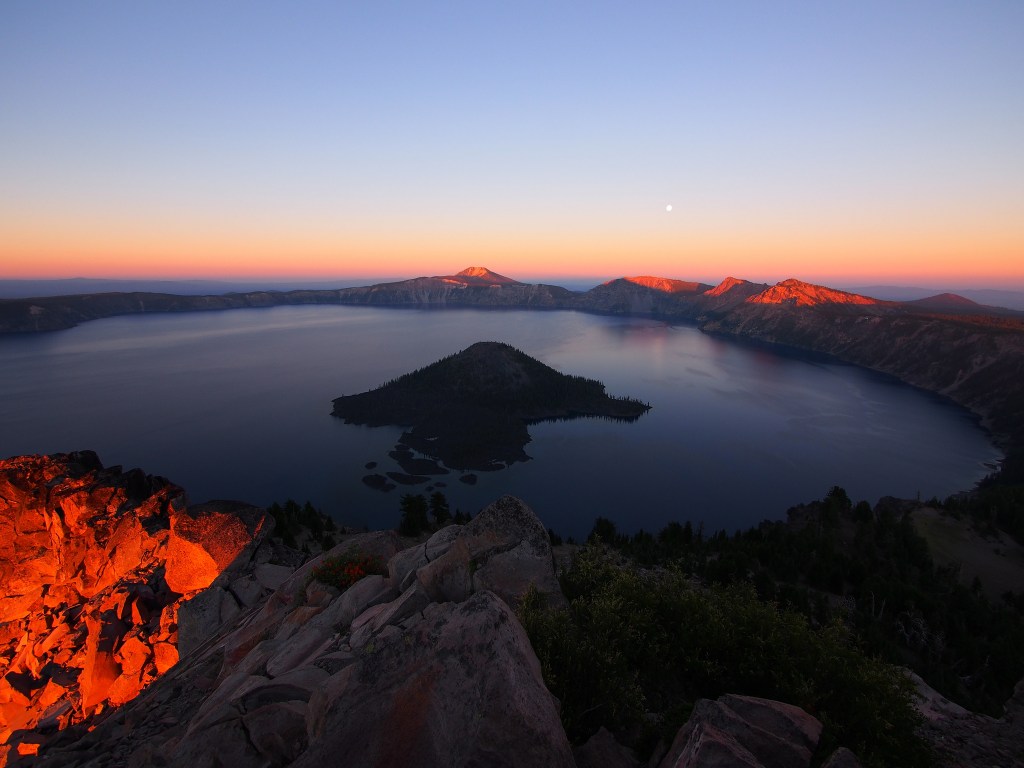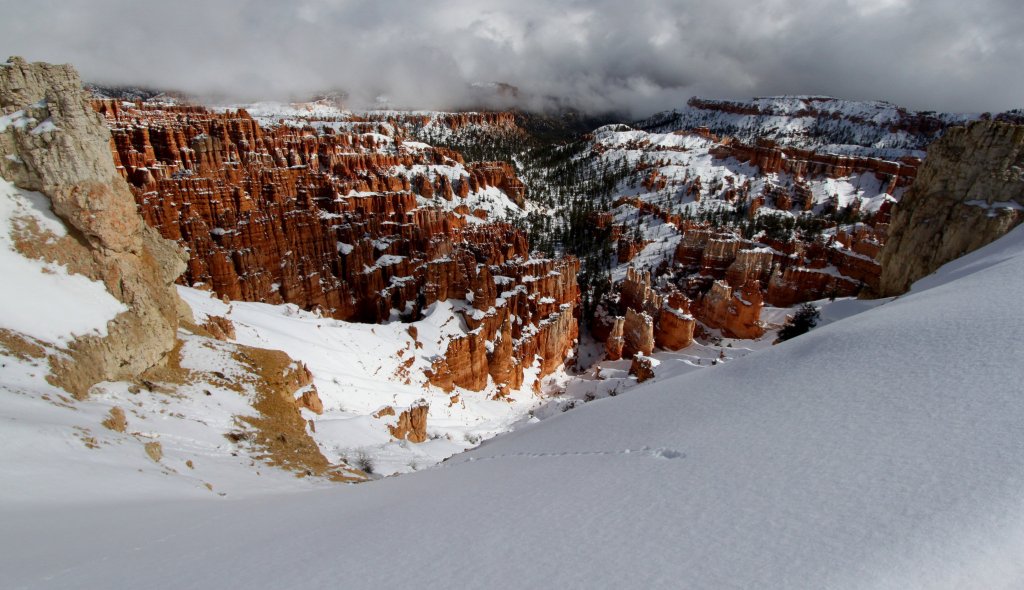Grab your map, pack and favorite playlist. It’s time to hit the open road.
Whether bagging the 14ers of Colorado, bouncing between Utah’s national parks, or gawking at the disparate scenery throughout California, few regions are more inviting for a late-summer, early-fall road trip than the American West.
But with bucket list national parks like the Grand Canyon annually attracting nearly 6 million a pop, you’re guaranteed not to be the only one with the travel bug. Many of the most popular natural attractions remain overcrowded and well-loved long after Labor Day. So I pored over digital resources and talked to an expert on how to avoid the mayhem.
Here, five have tips on where to go, what to do and how to beat the crowds to your favorite views.
Visit at Sunrise and Sunset
Show up on Saturday afternoon, and you’ll fight for space in the parking lot and along the trail. But you’ll miss the biggest crowds if you roll into your favorite park early or late in the day. “Sunrise and sunset are some of the best times to visit,” says Emily Moench, public relations manager with Visit Utah, the state’s official destination marketing organization.
In addition to the lighter crowds, she says those times offer optimal light for natural photography. And of course, if your dates are flexible, Moench recommends midweek visits and bypassing holidays, if possible.

Watchman Peak in Crater Lake National Park | Photo: Brian Holsclaw, Flickr
Planning a late-summer stop at Crater Lake National Park in southern Oregon? Catch sunrise at the summit of Mount Scott and follow it up with a sunset hike to Watchman Peak. You’ll gain less than 350 feet over a half-mile, and the views of Wizard Island, surrounding Cascade peaks and Crater Lake’s miles-wide caldera are some of the best in the park. [Ed. Note: At publication, the Spruce Lake Fire forced closures in several sections of the park. Read current closure info here.]
Replace National Parks with State Ones
I get that you’re enamored with national parks, and for good reason: they host some of the country’s most stunning scenery. But you’re missing out if you bypass state parks, many of which offer less-crowded campsites, hikes and other activities just miles from their national park brethren. In Utah, for instance, you can:
- Sandboard at Coral Pink Sand Dunes State Park, just outside of Zion
- Ride horses at Kodachrome Basin State Park, sandwiched between Bryce Canyon and Grand Staircase-Escalante National Monument
- Paddle the calm waters of Wide Hollow Reservoir or hike the mile-long Petrified Forest Trail, both at Escalante Petrified Forest State Park
Elsewhere, Oliver Lee Memorial State Park hosts one of southern New Mexico’s most beautiful hikes: the short but strenuous Dog Canyon Trail—less than 30 miles from White Sands National Monument. If you can muscle through more than 3,000 feet in elevation gain, you’ll enjoy vistas of the surrounding Tularosa Basin, White Sands National Monument and the Organ Mountains. The trail also hosts a variety of wildlife, including lizards, raptors, rattlesnakes, elk, sheep and the occasional mountain lion.
Looking for more ideas on where to hike, climb or ride in state parks? Read up on state park favorites here.
Take Advantage of the Off-Season
In the past, the typical “shoulder season” lasted between Labor Day and Spring Break, but that’s changing. These days, Utah’s slow season doesn’t start until mid-October, according to Moench. With scorching summers giving way to cool, yet comfortable autumn temperatures, more outdoor enthusiasts are planning weekend trips well into fall. “It makes camping more pleasant, and some of the hikes are more pleasant, too,” Moench says.
If you’re daunted by the prospect of crowded parking lots well into October, don’t shy away from visiting in late fall. Even as snow begins to fall, many parks offer a variety of wintertime activities.

Bryce Canyon | Photo: Prayitno, Flickr
Park rangers lead snowshoe tours through Bryce Canyon National Park each winter, and the park’s Rim Trail is popular with cross-country skiers. The 5.7-mile trek passes some of the park’s most spectacular vistas, including Inspiration, Sunset, Sunrise and Fairyland Points, and it doesn’t pose impassable elevation changes for skiers. (In all, the Rim Trail gains about 450 feet and loses roughly 1,000 feet along the way.)
In strapping on the skis, you’re not just missing the crowds—you’re enjoying some of the park’s best scenery, as well. “It’s spectacular to have a bit of snow on the red rocks against the blue sky,” Moench says. “It’s a really unique experience.”
Look Beyond the Borders
Ever stopped to admire the scenery just before entering your favorite park? If not, you’re far from alone. Whether focused on their ultimate destination or unsure of what’s out there, most road trippers simply don’t hike some of the off-the-beaten-path or less-publicized trails just outside of many parks—even though the landscape is likely comparable. “The scenery doesn’t end at that park boundary,” Moench says. “It just extends.”
Just outside Yellowstone National Park, for instance, the 16-mile Union Falls hike delivers no shortage of spectacular scenery. Along the way, you’ll pass backcountry campsites, follow the remnants of a 137-year-old wagon road and enjoy views of the 250-foot Union Falls.
Get Digital
Social media is good for more than arguing about politics and following the latest news. Numerous tools have cropped up in recent years, aimed at making the outdoor experience easier to plan and navigate for travelers. Here’s how they’re doing it.
Chatbots
Visit Utah initially launched a chatbot (accessible via Facebook Messenger) to quickly answer common questions about Zion National Park, but you can also ask all of your Utah road trip questions. Once you’ve sent a message to the organization, the bot’s first reply will be to ask whether you’re inquiring about Zion. If so, it will provide that day’s shuttle schedules, weather updates, recommended hikes and tips for ensuring visitors are equipped with water, sun protection and proper footwear.
Broadly speaking, Moench suggests following the Twitter feeds of any parks you plan on visiting. In Utah, she says the National Park Service is quick to update visitors on parking and campsite availability, as well as transportation alternatives when congestion is high.
Real-Time Web Tools
Glacier National Park hosts a website that displays real-time information on available campsites. The valuable map and accompanying chart help would-be campers make plans by showing which campgrounds are full and what time of day they’ve recently filled up (if at all).
